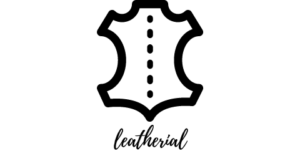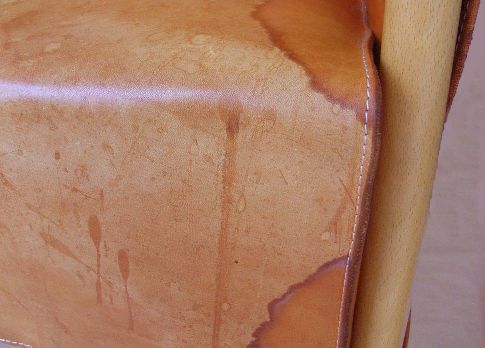When you spend a significant amount of time handling, caring for, and using your leather goods, it’s only natural that they’ll eventually show some wear. Whether it’s a naturally-occurring blemish, exposure to harsh conditions, or just normal use and tear, leather is a delicate material that requires careful maintenance to stay in top condition.
If you take proper care of your leather goods — storing them away from sunlight, humidity, and other sources of damage; conditioning them after each use, and applying waterproofing agents when necessary — you can expect to get many years of use out of them before they start showing signs of wear. But the moment you drop your favorite leather jacket on the ground or fail to protect your motorcycle gloves from rain and snowfall, several types of damage can occur.
Keep reading for details about some common types of leather damage and how to prevent or repair them.
Table of Contents
UV Damage
One of the most common types of leather damage is UV damage caused by overexposure to sunlight. Leather is a porous material that easily absorbs water, oil, and other substances, including UV rays. While UV rays aren’t a major concern when the leather is in its fresh state, exposure to UV rays over time can cause significant and irreversible damage to the leather’s color and texture. This can be prevented by storing leather goods in a dark, dry area when they’re not in use, as well as using a UV-blocking leather cleaner, conditioner, or moisturizer.
Water Damage
Another common type of leather damage is water damage. Leather is a porous material, so it can absorb water — but it’s also quick to dry. Unfortunately, the quick drying properties of leather lead to a higher risk of shrinkage, particularly when wet leather is left untreated.
How to prevent: Waterproofing agents applied to leather goods will help prevent water damage, as they form a barrier that keeps water out while allowing the leather to dry more slowly.
Heat Damage
Leather is also sensitive to high temperatures, so you must avoid exposing it to extreme heat and sunlight. When leather goods are left in a hot car or exposed to direct sunlight, their color and appearance can be significantly altered. If the temperature is high enough, the leather may eventually melt.
How to prevent: To avoid this type of damage, store your leather goods in the shade, out of direct sunlight, and away from sources of heat, like your car’s glove box during the summer.
Mold and Rotting
Leather goods are also susceptible to mold and rot, particularly if they are stored in a humid or wet environment. The best way to avoid this type of damage is to store your goods in a dry, well-ventilated place. If mold or rot occurs, you will likely be able to clean the leather with a leather cleaner.
Prevention: It’s best to avoid this type of damage altogether by keeping humidity low and storing leather goods in a dry place.
Insect Infestation
If leather goods are stored in a warm, humid environment, they can attract insects that burrow their way through the leather to lay their eggs. Avoid this type of damage by keeping your leather goods in a dry place, away from sources of heat and humidity. If you spot insects on your leather goods, you can remove them with a thick piece of paper folded into a narrow strip or a spoon.
To protect your leather goods from these types of damage, it’s important to keep them in good condition. This includes regularly cleaning, conditioning, and waterproofing your leather goods, as well as storing them in a cool, dry place when they’re not in use.
Summary
When you spend a significant amount of time handling, caring for, and using your leather goods, it’s only natural that they’ll eventually show some wear.
Whether it’s a naturally-occurring blemish, exposure to harsh conditions, or just normal use and tear, leather is a delicate material that requires careful maintenance to stay in top condition.
If you take proper care of your leather goods — storing them away from sunlight, humidity, and other sources of damage; conditioning them after each use, and applying waterproofing agents when necessary — you can expect to get many years of use out of them before they start showing signs of wear.
But the moment you drop your favorite leather jacket on the ground or fail to protect your motorcycle gloves from rain and snowfall, several types of damage can occur. Keep reading for details about some common types of leather damage and how to prevent or repair them.

